If it's been a while since you checked on your brand reputation, you might be working on outdated assumptions and irrelevant data. And the results: brand campaigns that just miss the point.
Keeping up-to-date with customer perception is essential when you're working on your corporate brand and reputation analysis can give you just that.
Try Prowly's media monitoring free for 7 days
Start tracking your brand and keywords for free (no credit card required) in Prowly.
- Comprehensive monitoring: Track the web and social media mentions.
- Transparent pricing: Plans start at $258/month
- All-in-one platform: Get everything you need in one tool for PR, incl. media database, outreach, reporting, and more
Why should you conduct brand reputation analysis?
Brand reputation is the collective perception of your company as held by various stakeholders, including customers, employees, investors and the general public.
It's shaped by direct experiences, media coverage, online reviews, and word-of-mouth recommendations.
Why is brand reputation important for PR?
Let's start with a brand vs reputation comparison:
👉 your brand is your company's intentional presentation: name, logo, colors, messaging
👉 your reputation is how the company is perceived externally: opinions, reviews, and beliefs
You can directly shape your brand and indirectly shape your reputation. And both play a key role in any business.
For you, as a PR professional, understanding and managing brand reputation is critical. It highly impacts the fate of your company, influencing areas like:
- customer decisions and loyalty
- ability to attract and retain talent
- investor confidence and stock prices
- and it can make or break partnerships and business opportunities
No doubt then that you need to keep an eye on your brand reputation and run regular analyses. It can help you identify potential crises, track the effectiveness of your campaigns, and make decisions about your brand's image that are backed up by numbers. A whole new level of delivering results.
Can you measure brand reputation?
You can put a number on brand reputation – and most likely, a few. There are several ways to quantify it and you'll get the best results by combining various metrics. With the right measurements in hand, you can get a comprehensive understanding of your brand performance on the market.
5 key brand reputation metrics
How to measure brand reputation - online and offline? Track the right numbers! Let's talk about the crucial metrics.
#1 Sentiment analysis

Sentiment analysis assesses the tone of each mention, indicating if it's positive, negative or neutral. It's used to gauge public perception and identify potential PR issues or opportunities for brand improvement as they arise.
💡 Here's a whole guide to sentiment analysis in PR or more specifically:
➖ brand sentiment analysis
➖ and a list of the best tools available on the market.
#2 Share of Voice (SoV)
Share of Voice is the percentage of media coverage or conversations that you get vs your competition.
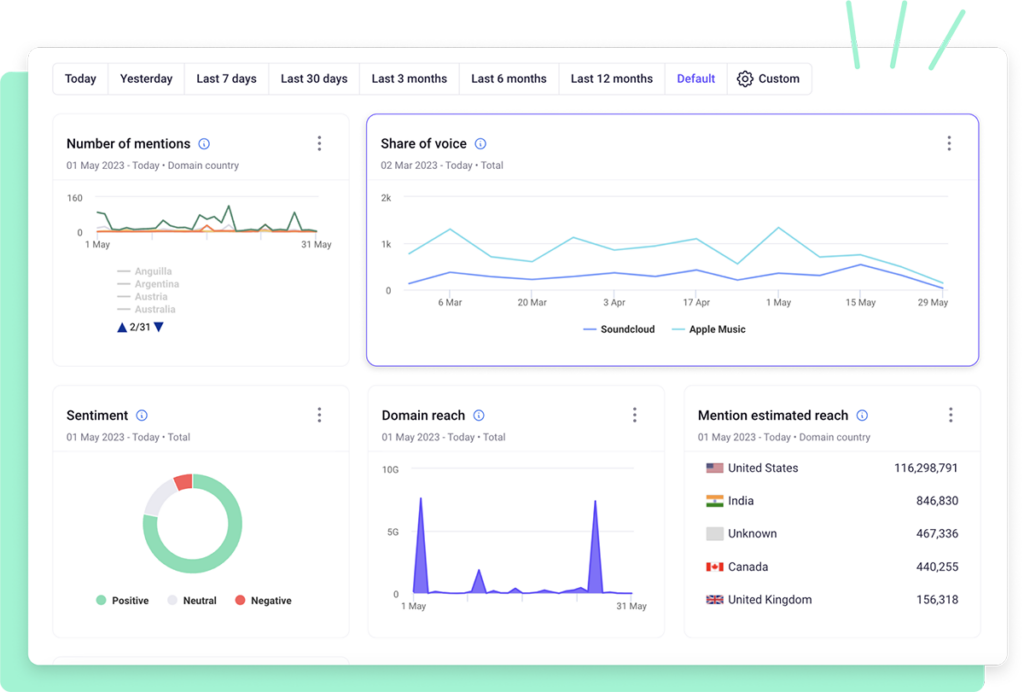
It's used to assess a brand's visibility and influence relative to its competitors, helping you make inform strategies to get more of that pie.
💡 You can learn all about Share of Voice from this article.
#3 Media Exposure
Media exposure is the total amount of visibility a brand receives across various media channels, including traditional news outlets, social media, and other online platforms.
This metric shows you what your general reach is and how effective your PR and marketing strategies are in generating publicity.
#4 Stakeholder feedback
When thinking about product development, customer service improvements, and overall business strategy, you definitely need your stakeholders' insights. Gather direct feedback from the key groups affected by (and affecting) your business. This means customers, employees, investors and partners.
In terms of brand analysis, these are often the key figures in forming general public perceptions of your brand.
#5 Quality of mentions

Contrary to just counting the number of mentions, their quality is an assessment of their substance, relevance and impact.
You could use this metric to evaluate the effectiveness of your messaging and to identify high-value media opportunities that align with your communication goals.
A step-by-step guide to brand reputation analysis in PR
Understanding brand reputation requires a systematic approach. Check out our steps to conduct a corporate reputation review and analyze brand reputation.
How to assess brand reputation?
Comprehensive data + mentions monitoring = staying in the loop of brand reputation.
1️⃣ Choose the right KPIs
Appropriate Key Performance Indicators (KPIs) are crucial to measuring brand reputation effectively. Opt for metrics that:
✅ Align with your overall business goals
✅ Ensure they are measurable and trackable over time
✅ Include a mix of quantitative and qualitative metrics
✅ Focus on metrics that provide actionable insights
We suggest you combine a few metrics from this list:
- Net Promoter Score (NPS)
- Customer Satisfaction Score (CSAT)
- Brand Awareness
- Sentiment Score
- Share of Voice
- Website Traffic
- Social Media Engagement Rates
All together, they can give you a fairly comprehensive view on your brand reputation. You'll learn what your customers think, how it differs from the general audience, and how visible you are compared to the competition.
Psst! Here's a whole article about PR Metrics: What to Measure and Why (with Examples). And to discover more ideas and inspiration by exploring this guide to brand awareness campaigns, complete with examples to spark your creativity.
2️⃣ Set up brand monitoring
For brand reputation analysis, you have to know what's being said about your company: both online and offline.
Brand monitoring software give you exactly that. With instant notifications, you can tackle issues that need your attention now. They're not just for crisis prevention, though: you can use them to assess the impact of your brand activities.
Online monitoring is cool, but imagine getting similar data about print and broadcast news.
👉 Print & broadcast monitoring
It's not true that only digital matters these days.
Not every brand's target audience are young people who spend most of the time online. And even if that would be true - presence in physical magazines, radio or TV, makes the brand look more reliable, genuine and maybe even luxurious.

Prowly lets you combine digital brand analysis with instant access to global and local papers–even those paywalled. With filtering options, you'll get notified about the mentions that truly matter. And you'll see them all displayed in easy-to-use dashboards.
💡 Tip: When choosing a media monitoring service, make sure it’s tailored to local media — for example, the UK market.
To ensure your print monitoring and broadcast monitoring needs are fully understood, contact us and let’s schedule a call to explore how the right features can support your goals.
Try Prowly's print & broadcast monitoring free for 7 days
Start tracking your brand and keywords for free (no credit card required) in Prowly.
- Comprehensive Monitoring: Track the web, social media, print, and broadcast mentions
- Transparent Pricing: Plans start at $258/month
- All-in-one platform: Get everything you need in one tool for PR, incl. media database, outreach, reporting, and more
👉 Social media & digital monitoring
Let's start with the online realm. Social listening tools go through digital content (virtually of any type), looking for keywords of your choice. But that's not all!
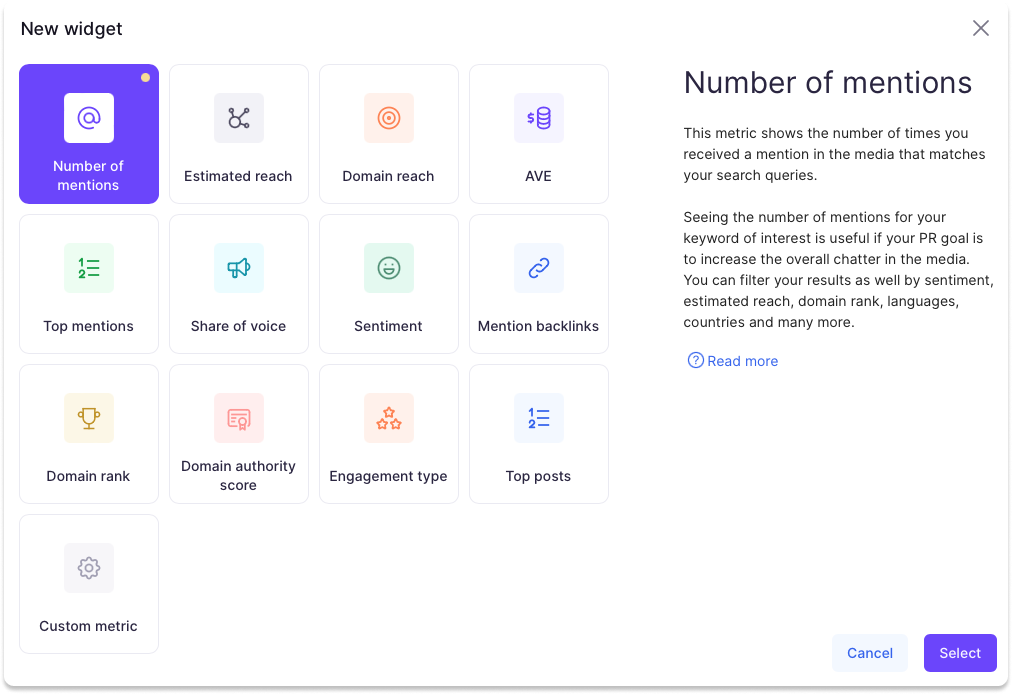
You learn more than just who said what. Apart from that, the tech analyzes each mention's context, like sentiment, and gives you a full breakdown.
💡 Tip: Read this full guide on social media reputation to get a complete picture of your PR strategy.
3️⃣ Use sentiment analysis and Share of Voice
- Share of Voice (SOV) measures your brand's visibility compared to competitors. By tracking SOV, you can gauge your brand's market presence and identify opportunities for growth.
- Sentiment analysis helps you understand the emotional tone behind mentions of your brand. It categorizes mentions as positive, negative or neutral, giving you insights into how people perceive your brand.
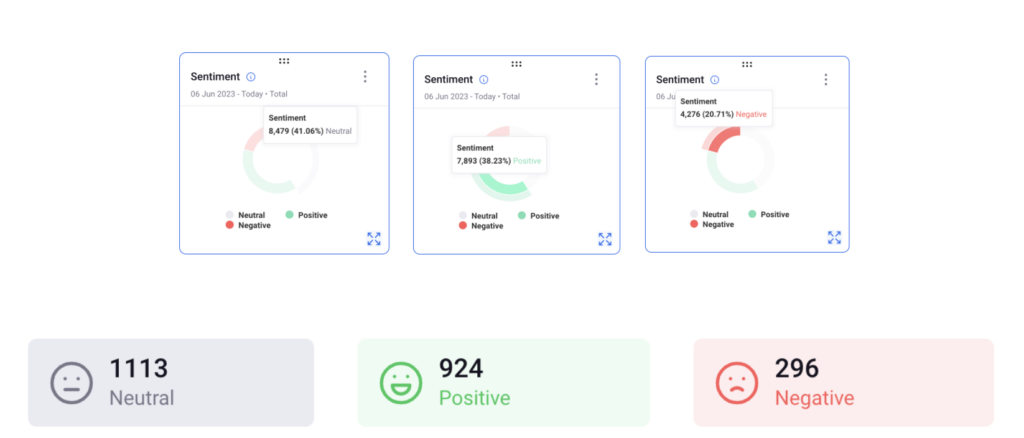
4️⃣ Set up negative mention alerts
Proactive crisis management is crucial for maintaining a positive brand reputation. Set up alerts for negative mentions to address potential issues as they arise. This allows you to:
- Respond promptly to customer complaints
- Address misinformation before it spreads
- Show that your brand is attentive and responsive
Remember, the faster you respond to negative mentions, the better chance you have of mitigating their impact on your brand's reputation. And the less probable your stakeholders or client base start to get concerned.

5️⃣ Collect & analyze online reviews
Online reviews play a significant role in shaping brand reputation. Regularly collect and analyze reviews from various platforms to:
- Identify common praise or complaints
- Track changes in customer satisfaction over time
- Respond to reviews promptly and professionally
You will, of course, get notifications about them from Prowly, but it's good to store them all in one place somewhere. After all, they make up a part of your brand knowledge.
💡 Aim to respond to reviews within 24-48 hours to show that you value customer feedback and are committed to addressing concerns. Of course, if the review has crisis potential, you need to react much faster – ideally within 90 minutes.
6️⃣ Track your brand’s mentions over time
You should act on mentions immediately, but looking at the long-term perspective is equally important.
Monitoring brand mentions over an extended period allows you to:
- Identify trends in brand perception
- Evaluate whether your plans work
- Measure the impact of PR campaigns and initiatives
- Spot seasonal fluctuations in brand sentiment
- Detect early warning signs of potential PR crises
💡 Tip: If you want to make your PR strategy truly robust, learn how to measure, report, and protect your brand with this article on brand reputation management.
7️⃣ Analyze and report
Regular reporting is crucial for stakeholders to understand the state of your brand's reputation. When creating reports:
- Present data visually using graphs and charts
- Highlight key insights and trends
- Provide context for the data
- Include recommendations for action
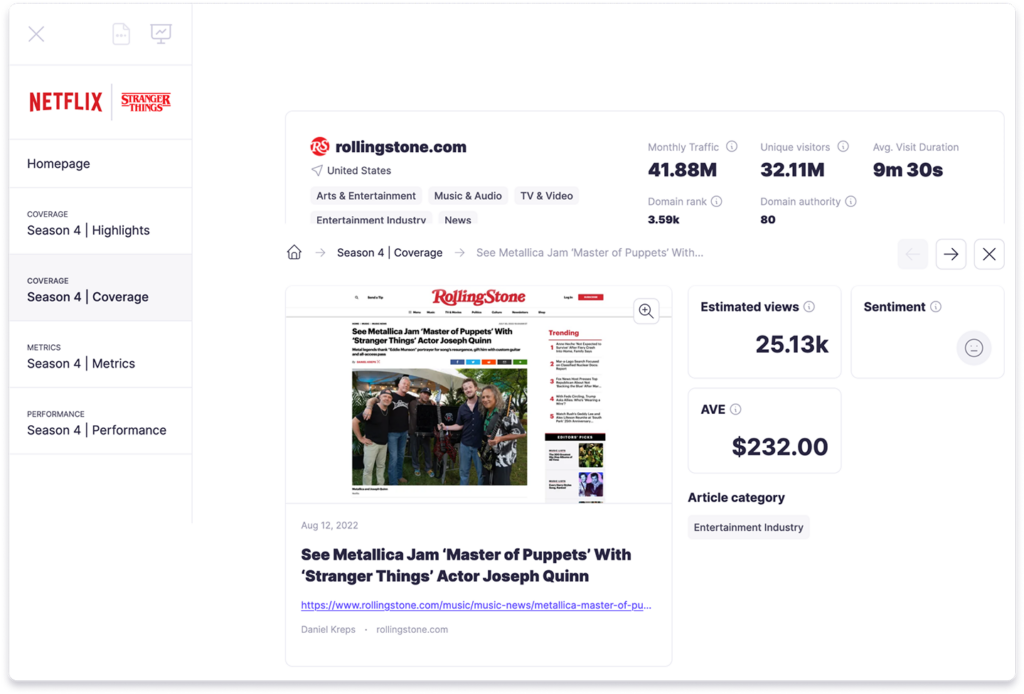
Tools like Prowly offer integrated reporting features, allowing you to easily incorporate brand mentions into your reports, saving time and ensuring consistency. And as it's all in one tool, adding a mention is just a few clicks.
This way, you can easily organize mentions and translate them into business language: metrics.
8️⃣ Refine strategies based on data analysis
Get an in-depth perspective on your brand reputation strategy with data analytics. With these in hand, you can both:
- Use positive brand mentions to reinforce your brand strategy with unique, user-generated content
- Address negative comments before they spike
In addition, brand analytics can indicate potential PR crisis threats. Those regular check-ins can inform your PR crisis management strategy and help mitigate damage.
➕ Extra effort: surveys
While monitoring and analysis provide valuable insights, sometimes it's necessary to go directly to your audience.
Think about organizing consumer surveys when:
- You need in-depth insights on specific aspects of your brand
- You want to validate trends observed in your monitoring data
- You're planning major brand changes or launching new products
- You need to measure the effectiveness of a specific campaign
Brand reputation analysis tools
When thinking on how to measure brand reputation, you can't pass on tools. Check out our brief tool comparisons.
#1 Prowly
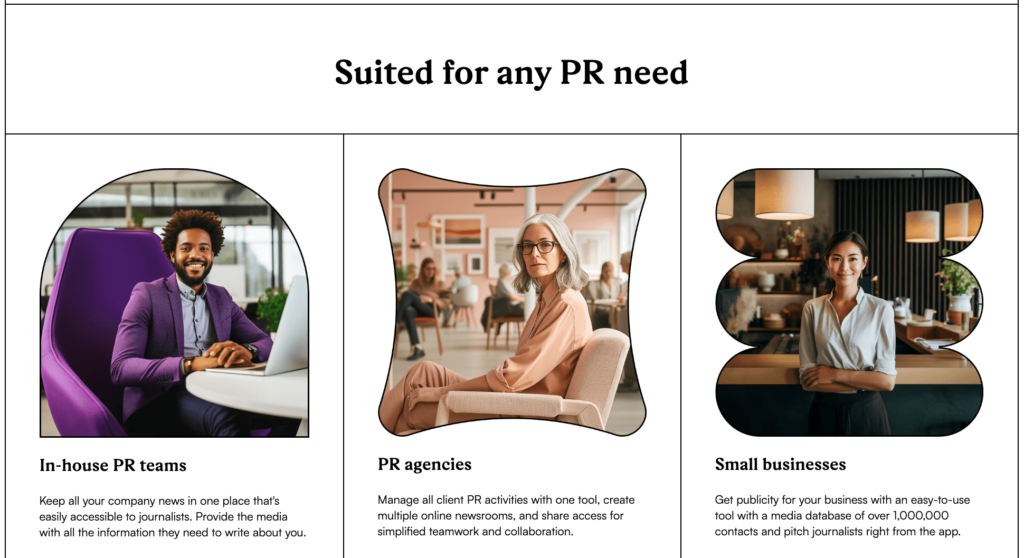
Prowly is a comprehensive PR platform that includes media monitoring, reporting, and CRM features. It's ideal for PR professionals looking for a fully integrated solution.
#2 Google Alerts

- Price: Free
- All-in-one PR tool: No
Google Alerts is a free tool that notifies you when new content matching your specified keywords appears on the web.
While limited in features, it's a good starting point for basic brand monitoring.
#3 Mention
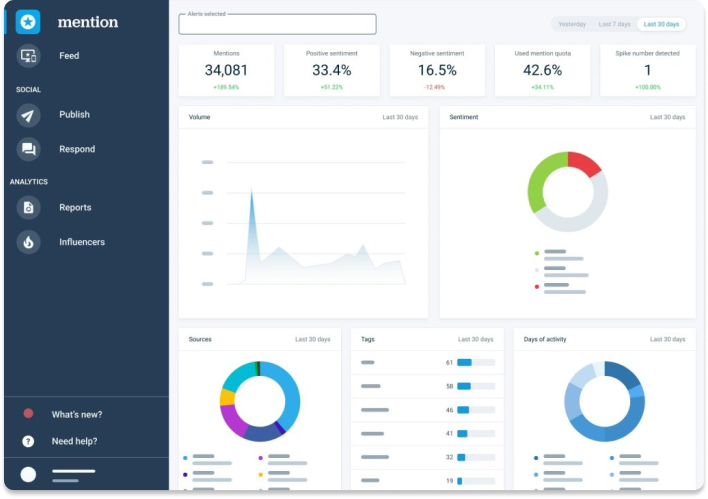
- Price: Starting from $49 monthly
- Free trial or demo: 14-day free trial available and you can book a demo call
- All-in-one PR tool: No
Mention combines social listening with post-scheduling capabilities.
It tracks brand mentions across various online platforms, including social media, blogs, and news sites.
#4 Brand24
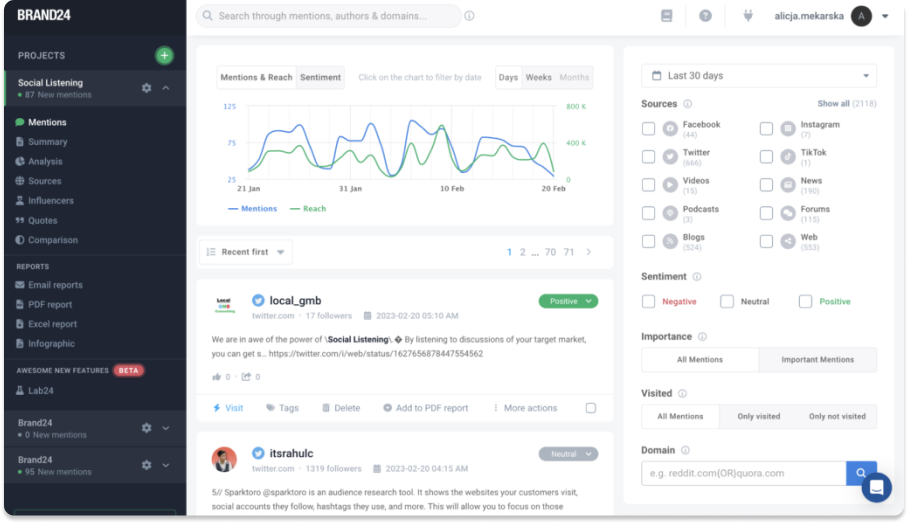
- Price: Starting from $79 monthly
- Free trial: Available for 14 days
- All-in-one PR tool: No
Brand24 focuses on online brand presence, offering features like sentiment analysis, influence scoring, and alerts.
It's particularly useful for social media monitoring and crisis prevention.
💡 Reputation can shift fast. These 16 PR crisis management examples show how brands responded when things went wrong — take a look and fine-tune your strategy if you spot any weak spots.
#5 Determ
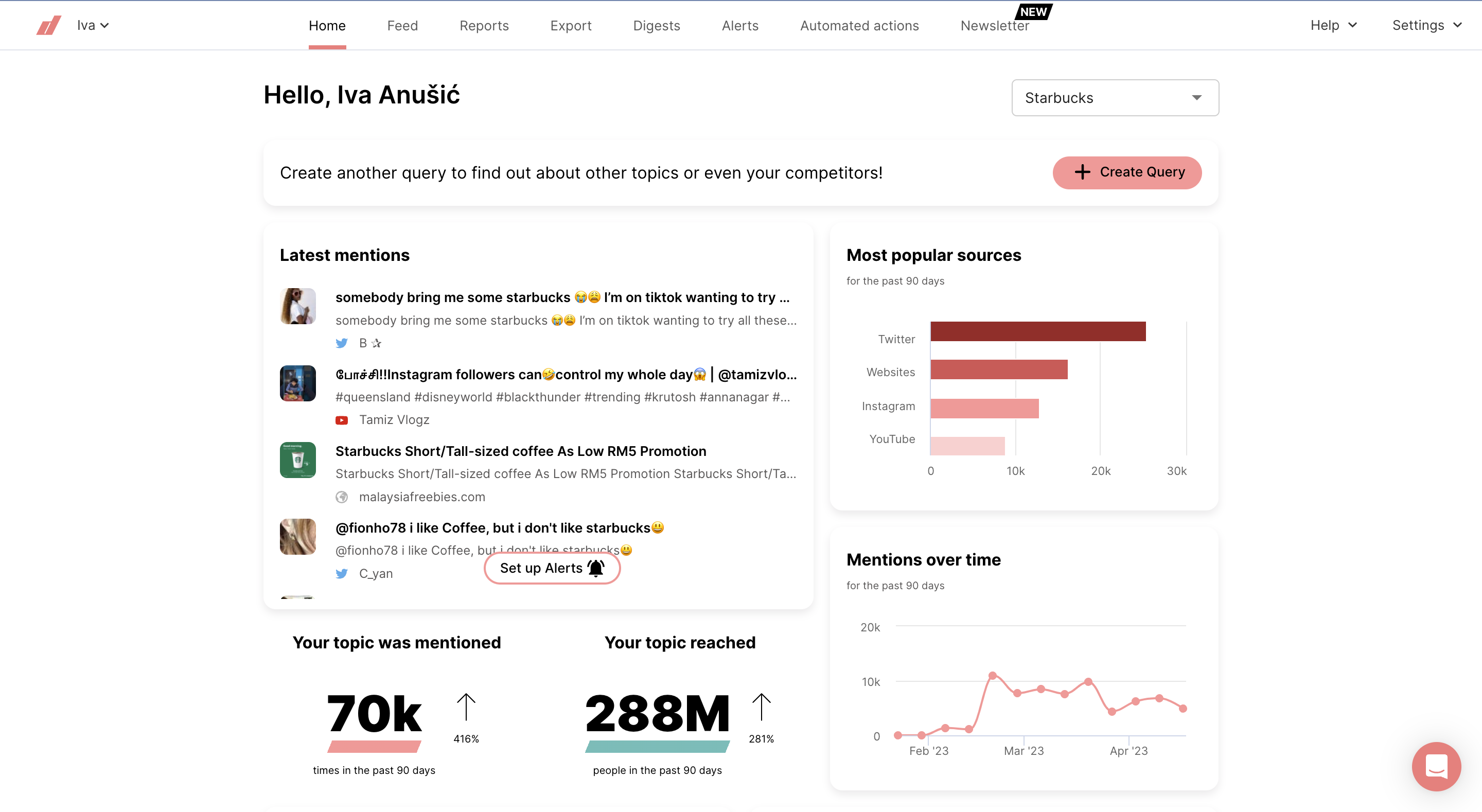
- Price: No publicly available pricing
- Free trial or demo: Both – after a demo you get a free trial account
- All-in-one PR tool: No
Determ offers real-time media monitoring across various online sources, including social media and news sites.
How to choose the right tool
When selecting a brand reputation analysis tool, consider:
- Your budget and team size
- The specific features you need (e.g. sentiment analysis, reporting capabilities)
- The channels you need to monitor (social media, news sites, print media)
- Integration with other tools you use
- Ease of use and learning curve
- Quality of customer support
Remember, the best tool for your needs will depend on your specific circumstances and goals. Many tools offer free trials, so take advantage of these to test different options before making a final decision.
Conclusions
How to track brand reputation? All you need is data on what people say about your brand. By measuring the right indicators and staying aware of the relevant mentions, you can assess your brand's reputation with confidence.
That's the first step for conscious work on your brand. And the best way to evaluate your efforts!
Looking for a comprehensive all-in-one PR tool?
Try Prowly completely free for 7 days in a platform with everything you need for PR.
- All-in-one software: Get everything you need in one tool for PR, incl. media database, outreach, reporting, and more
- Transparent pricing: Plans start at $258/month
- Comprehensive monitoring: Track the web and social media mentions.

